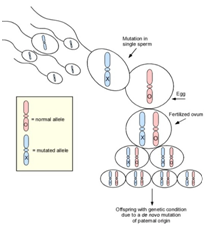Swyer Syndrome Causes, Symptoms, Diagnosis and Treatment

What is Swyer Syndrome?
Swyer Syndrome is a condition that affects sexual development. Sexual development is usually determined by the chromosomes of an individual; However, in Swyer’s syndrome, sexual development does not involve the affected person’s chromosomal makeup.
People usually have 46 chromosomes in each cell. Two of the 46 chromosomes known as X and Y are referred to as sex chromosomes because they help determine whether a person will develop male or female sex traits. Girls and women typically have two X chromosomes (46, XX karyotype), while boys and men usually have an X chromosome and a Y chromosome (46, XY karyotype). In Swyer’s syndrome, individuals with an X-chromosome and a Y-chromosome in each cell have the pattern, which is typically found in boys and men, female reproductive structures.
People with Swyer’s syndrome have typical female external genitalia. The uterus and the fallopian tubes are usually formed, but the gonads (ovaries or testes) are not functional; Affected individuals have undeveloped clumps of tissue called Streak-gonads. Due to the lack of development of the gonads, Swyer’s syndrome is also called 46, XY complete gonadal dysgenesis. The remaining gonad tissue is often cancerous, so that it is usually surgically removed early in life.
Causes of Swyer Syndrome
In most cases of Swyer syndrome the exact cause of the disease is unknown. Researchers believe that disorders or changes (mutations) of a gene or genes involved in normal sex differentiation of a fetus with an XY chromosomal makeup cause Swyer’s syndrome.
Symptoms of Swyer Syndrome
- Female phenotype
- Absence of puberty
- Infertility
- Tall stature
- Eunuchoid proportion
- Absence of menstruation
- Ambiguous genitals
- Dysgenetic testes
- Small uterus
- Small fallopian tubes
Diagnosis of Swyer Syndrome
- The evaluation of delayed puberty usually shows an increase in the gonadotropins, which indicates that the pituitary gland provides the signal for puberty but the gonads do not react.
- The next steps of the evaluation usually include the verification of a karyotype and imaging of the pelvis. The karyotype shows XY chromosomes and the figure shows the presence of a uterus but no ovaries (the streak gonads are not usually seen by most imaging).
- Although an XY karyotype can also indicate a person with a complete androgen insensitivity syndrome, the absence of breasts and the presence of uterine and pubic hair exclude the possibility. At this point, it is usually possible for a doctor to perform a diagnosis of Swyer’s syndrome.
Treatment of Swyer Syndrome
- Genetic counseling can be of benefit to the affected persons and their families. Other treatment is symptomatic and supportive.
- Swyer syndrome is treated with a hormonal replacement therapy, replacing estrogen and progesterone, which is usually started from puberty. In addition to support in normal development of secondary sex traits, hormone replacement therapy can also help prevent bone loss and thinning (osteoporosis) later during life.
- Streak gonads are usually surgically removed because they are affected individuals with an increased risk of developing a gonadal tumor.
- Individuals with SF1 mutations may have adrenal insufficiency. This should be investigated and treated, if available.
- Although women with Swyer’s syndrome are sterile, they can become pregnant and result from the use of donated eggs.
By : Natural Health News




